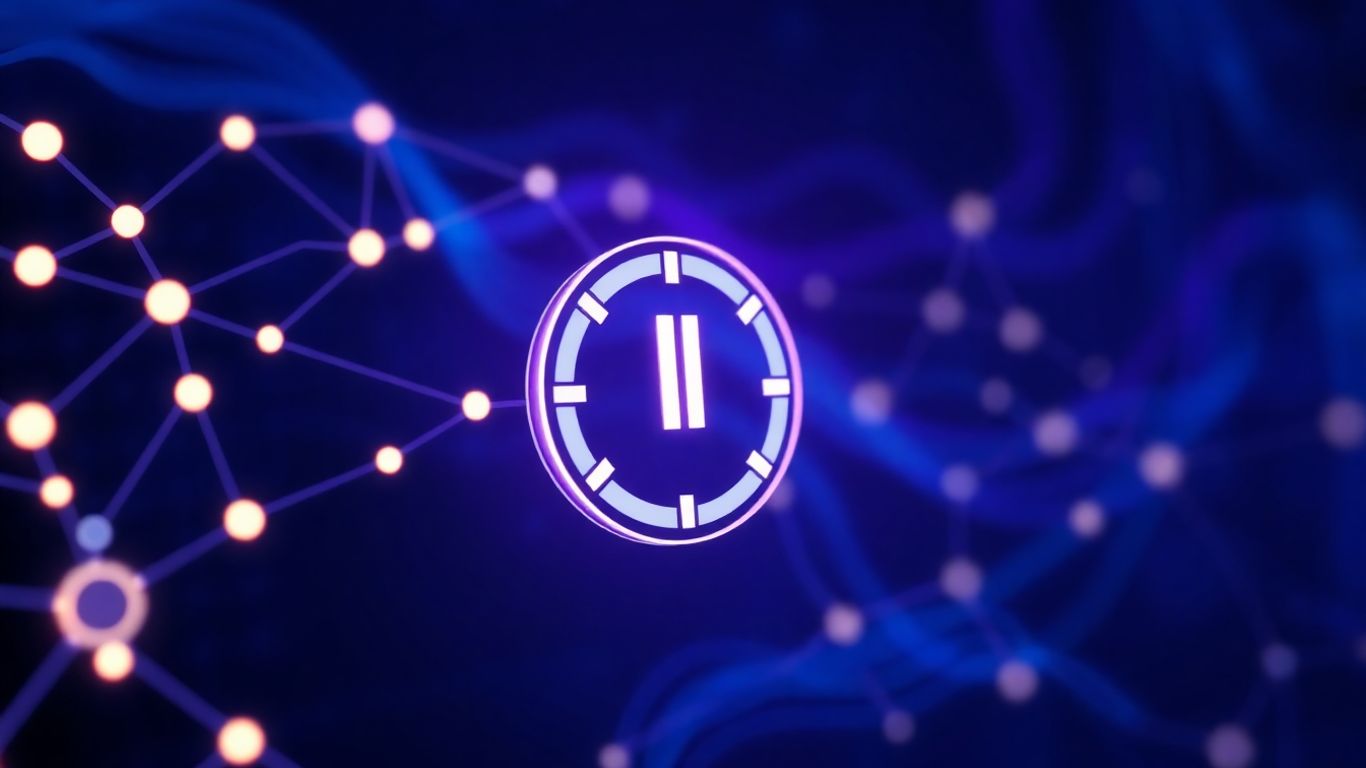[ newsletter ]
Stay ahead of Web3 threats—subscribe to our newsletter for the latest in blockchain security insights and updates.
Thank you! Your submission has been received!
Oops! Something went wrong. Please try again.
Understand pause and blacklist function scan in smart contracts. Learn about its components, advanced techniques, and role in DeFi security.





Hey everyone, let's talk about something super important in the crypto world: making sure our digital assets are safe. You hear about hacks and scams all the time, and it's easy to feel overwhelmed. But there are tools and methods out there to help us spot trouble before it happens. One of these is the pause and blacklist function scan. It might sound a bit technical, but the idea is pretty straightforward: checking if a smart contract has built-in ways to freeze assets or block certain addresses. This article breaks down what that means and why it matters.
In the fast-paced world of crypto, things can change in an instant. That's why understanding tools that help us keep an eye on potential risks is super important. We're talking about "Pause and Blacklist Function Scans" here, which are basically ways to check if a smart contract has the ability to freeze or block certain actions or addresses. It’s like having a built-in safety check before you jump into something new.
The way bad actors try to mess with crypto projects keeps changing. It used to be simpler, but now it's way more complex. They're always finding new tricks to steal funds or manipulate markets. Think about things like rug pulls, where developers disappear with investor money, or exploits that drain entire protocols. These aren't just random events; they're often planned out using specific features within smart contracts. The sheer volume and sophistication of these attacks mean we need better ways to spot trouble before it happens.
Now, you might think a regular security audit is enough. And yeah, they're good, they really are. But they often happen just once, before a project launches. The problem is, smart contracts can be complex, and sometimes vulnerabilities pop up later, or developers might add new features that introduce risks. Plus, audits can be expensive and take a long time, which isn't always practical in the crypto space where things move at lightning speed. It’s like getting your car inspected once a year – it’s important, but it doesn’t catch every little thing that might go wrong between inspections.
Because of these limitations, we really need to be watching things all the time. Continuous monitoring means constantly checking smart contracts for any suspicious changes or functionalities. This is where pause and blacklist scans come in handy. They're not a magic bullet, but they give you a quick snapshot of some really important control mechanisms. Imagine a system that's always on the lookout for specific red flags, like a security guard who never takes a break. This kind of ongoing vigilance is becoming less of a nice-to-have and more of a must-have for anyone serious about crypto security. It helps us read blockchain data more effectively by highlighting key functions that could be misused.
The crypto landscape is constantly shifting, and with it, the methods used by malicious actors. Traditional security measures, while valuable, often struggle to keep pace with the speed and complexity of modern threats. This necessitates a move towards more dynamic and continuous security practices, where tools that can quickly identify potential control mechanisms like pause and blacklist functions become indispensable.
When we talk about scanning smart contracts for pause and blacklist functions, we're really looking at the underlying mechanisms that give a contract owner or a group of holders the power to freeze or block certain addresses. It's not just about finding a single line of code; it's about understanding the control levers.
Pause functions are basically emergency stops. They're designed to halt a contract's operations, usually to prevent further damage during an exploit or a critical bug. Think of it like hitting the big red button on a machine. We need to find out who can press that button and under what conditions.
It's important to note that some protocols might use these pause switches for initial launch control and then revoke them. Others might keep them active, which can be a red flag if the team is anonymous. For instance, some tokens might have a blacklist function that can be activated by the owner, which could be used to trap sellers or block specific wallets [1].
Blacklisting is similar to pausing but more targeted. Instead of stopping everything, it prevents specific addresses from interacting with the contract. This could mean blocking a malicious actor or, in less savory cases, blocking users who try to sell a token.
Many blockchains have built-in capabilities for this. For example, BNB Chain uses a validator-driven blacklist, and Tron has a protocol-level module for freezing accounts. Understanding these mechanisms helps us see how easily an address can be targeted [0].
This is where we dig into who actually holds the power. It's not enough to just find a pause or blacklist function; we need to know who controls it and how they got that control. This involves looking at:
Sometimes, a contract might appear safe on the surface, but the real risk lies in the ownership structure. If an anonymous team retains control over pause or blacklist functions, it's a significant risk factor that shouldn't be ignored. Always trust your gut feeling; a clean scan score doesn't mean zero risk [1].
Tools like De.Fi Scanner can help identify these control levers quickly, giving you a fast read on whether a token warrants further attention or should be avoided altogether. It's a good first step before diving deeper into charts or community sentiment.
Look, nobody wants to spend hours digging through code, right? That's where the fancy new tools come in. They're getting smarter, using things like AI to spot problems that used to fly under the radar. It's like having a super-powered assistant who can read code way faster than you can.
This is where things get really interesting. Instead of just looking for specific keywords or known bad patterns, AI can actually try to understand what the code is doing. It's built on big language models, kind of like what powers chatbots, but trained specifically on code. This means it can process huge amounts of code, way more than a human ever could, and spot weird logic or potential issues that are hidden deep within. Think of it as a really smart detective that can read thousands of pages of documents in minutes. These systems can process up to 131,072 tokens, which is enough to audit entire codebases. They're also way faster than manual checks, like 14,605 times faster, while still being pretty accurate.
Imagine having a whole team of specialized security bots, each with its own job. That's the idea behind multi-agent systems. One bot might focus on finding reentrancy bugs, another on checking access controls, and another on how different contracts talk to each other. They work together to give a more complete picture of the security. This approach is designed to be continuous, not just a one-time check. It's about constantly watching the system for any weird behavior or new vulnerabilities. This is a big step up from just running a scan once and hoping for the best. It's about building a whole security system that's always on guard.
This is the next level of AI analysis. Instead of just looking at the syntax, these tools try to grasp the meaning of the code. They understand the intent behind the functions and how they interact. This allows them to catch more subtle bugs, like when a contract behaves unexpectedly under certain conditions, even if it doesn't technically break any rules. It's about understanding the 'why' behind the code, not just the 'what'. This helps in identifying vulnerabilities that might be missed by simpler tools, especially those that rely on specific patterns or keywords. It's a more holistic way to look at security, trying to predict how the code will actually behave in the real world.
The problem with older security tools is they often just looked for known bad patterns. But attackers are always coming up with new tricks. Advanced tools are moving towards understanding the actual logic and intent of the code, which is way harder to fool.
Here's a quick look at what these advanced tools can help with:
When you're looking at a new project, using these advanced scanning techniques can give you a much clearer picture of the risks involved. It's not foolproof, but it's a lot better than just guessing. You can check out tools that offer network scanning to get a sense of the landscape.
So, you've run a scan, and now you've got a bunch of flags and scores. What does it all mean? It's not always a simple 'good' or 'bad.' Think of it like a weather report – some things are clear skies, others are a chance of rain, and some are a full-blown storm warning. We need to break down these results to figure out what's actually a problem and what's just noise.
These are the big, flashing neon signs. If a scan spits out a red flag, it usually means there's a high probability of a serious issue. We're talking about things that could lead to a total loss of funds or make a token completely unusable. If you see a red flag, it's generally best to walk away unless you have a very, very good reason and a deep understanding of the specific contract.
When a scanner screams 'red,' it's your cue to pause. There are countless other opportunities out there, and protecting your capital should always come first. Don't let FOMO override common sense.
Yellow flags are more like caution signs. They indicate potential risks that aren't necessarily deal-breakers but definitely need a closer look. These might be features that could be abused, or they might be standard features with specific implications.
No scanner is perfect. You'll run into false positives (where the scanner flags something as risky, but it's actually fine) and false negatives (where the scanner misses a real risk).
It's important to remember that scan results are a starting point, not the final word. They help you prioritize what to investigate further. Always combine scanner output with your own research, checking block explorers, project documentation, and community sentiment.

So, you've run a pause and blacklist function scan, and the results are in. What do you do with that information? It's not just about getting a report; it's about actually using it to make smarter decisions and keep things safe. Think of these scans as your early warning system. They give you a heads-up so you can act before something bad happens, rather than just reacting after the fact.
Before you even think about putting capital into a new token or protocol, running a scan is a smart first step. It's like checking the weather before a hike. You wouldn't just head out without knowing if a storm's coming, right? The same applies here. A quick scan can reveal potential issues like hidden pause functions or aggressive blacklisting mechanisms that could lock you out of your own assets later.
Here's a simple way to think about it:
Once a project is live and you're involved, the scans don't stop. Continuous monitoring is key. Things can change, and new vulnerabilities might be discovered or exploited. Regularly re-scanning contracts, especially after significant updates or when new features are added, helps catch any new risks that might have crept in.
It's also about watching the network activity. If a pause function is suddenly activated, or if a large number of addresses are blacklisted without a clear reason, your monitoring systems should flag this immediately. This kind of real-time observation is what separates proactive security from reactive damage control.
Even with the best scans and monitoring, incidents can still happen. If a pause function is unexpectedly triggered, or a blacklist is used in a way that harms users, you need a plan. This is where having a well-defined incident response playbook comes in handy. It should outline the steps to take, who is responsible, and how to communicate with the community.
For example, if a protocol is paused due to a security issue, the response plan should detail how the team will investigate, fix the problem, and then safely unpause the system. In more severe cases, like a hack where assets are stolen, having tools and processes for asset recovery, even if complex, can make a significant difference. The goal is to minimize losses and restore confidence as quickly as possible.
Integrating scan findings isn't a one-time event; it's an ongoing process. It means building checks into your daily routine, staying informed about new threats, and having clear procedures for when things go wrong. This proactive approach is what helps protect capital and build trust in the long run.
It turns out, not all blockchains are created equal when it comes to control. While the dream is a totally hands-off system, many networks have built-in ways to hit the brakes or block certain addresses. This isn't always a bad thing; it can be a lifesaver when things go really wrong, like a major hack. But it also means that some networks have a hidden layer of control that isn't always obvious.
Some blockchains have functions baked right into their core code that allow for freezing assets or blacklisting addresses. This is often presented as a security feature, a way to stop stolen funds from being moved. Think of it like a circuit breaker for the network. However, it also means that a select group, often the core developers or a foundation, can decide to stop transactions for specific accounts. This capability can be activated in a few ways:
This is a bit more subtle than hardcoded functions. Here, the network's rules allow for addresses to be filtered or blocked based on configuration updates. It's like having a master switch that validators can flip. The key thing is that this might not be visible on the blockchain itself; the "freeze" happens at the validator level. This approach gives a lot of power to those who manage the network's configuration, and it's important to know who has that power and how they use it.
Sometimes, the control mechanisms aren't in the blockchain's base layer but are managed through smart contracts. This means that specific smart contracts can be designed to pause operations or blacklist addresses. While this offers more flexibility, it also means that the security of these controls depends heavily on the smart contract's code itself. If the smart contract has bugs, it could be exploited, or it could be used to unfairly block users. Heco is an example of a network that uses smart contracts for this purpose.
The existence of these control mechanisms, whether native, configuration-based, or smart contract-driven, highlights a trade-off. While they can be vital for security and recovering from hacks, they also introduce a degree of centralization. The real question for users and investors becomes not just if these controls exist, but who has the authority to use them and under what circumstances. Transparency around these powers is key to building trust in any blockchain network.

DeFi, or decentralized finance, is all about giving users control over their money, right? Well, not always. Many DeFi platforms, even those that market themselves as fully decentralized, have built-in features that let them hit the pause button or block specific addresses. This is where pause and blacklist function scans become super important. They're like the early warning system for your investments in this space.
One of the biggest fears in DeFi is the "rug pull." This is when the developers of a project suddenly disappear with all the invested funds. Sometimes, they do this by making it impossible for people to sell their tokens or by directly blocking certain wallets from interacting with the contract. A pause function could halt all trading activity, and a blacklist could prevent specific users from selling their tokens, effectively trapping their funds. Scans that identify these capabilities can help users avoid projects that might be setting up a scam. It's a quick way to spot potential trouble before you even think about putting money in. For instance, a token contract might have a hidden "transfer tax" that only activates after a certain amount of trading, or it could have a function that allows the owner to freeze all tokens. Identifying these upfront is key.
Beyond outright scams, pause and blacklist functions can also be used (or misused) to manage protocol stability. Imagine a situation where a sudden market crash or a bug in another connected protocol causes extreme volatility. A pause function, if implemented responsibly, could temporarily halt trading to prevent catastrophic losses for users and the protocol itself. However, the risk is that this power can be abused. A scan helps you understand if such controls exist and who has the authority to use them. This information is vital for assessing the overall risk profile of a DeFi project. It's not just about malicious actors; sometimes, these features are intended as safety nets, but their presence still warrants a closer look at the governance structure around them. You want to know if the team can actually revoke these powers once they are no longer needed, or if they are permanent fixtures.
The presence of pause or blacklist functions doesn't automatically mean a project is bad. It means there's a centralized point of control that could be a risk. Understanding who holds that control and under what conditions it can be exercised is the real question.
Ultimately, the goal of DeFi is to build a more open and fair financial system. However, the existence of hidden or poorly disclosed control mechanisms erodes user trust. When users know that scans can reveal these powerful functions, it encourages developers to be more transparent. Projects that voluntarily limit or revoke these powers, or clearly document their use and governance, can build stronger confidence with their community. Tools that provide a clear, easy-to-understand risk assessment, like those that flag pause and blacklist capabilities, are essential for this. They act as a bridge between complex smart contract code and the average user trying to make informed decisions. This transparency is what helps build user trust and confidence in the long run, making the DeFi space safer for everyone involved.
Here's a quick checklist to consider:
So, we've looked at a bunch of ways to keep things safe, from checking code before it goes live to having systems that can react fast when something goes wrong. It's clear that just one tool or one check isn't enough anymore. Things move too quickly, and the bad actors are always trying new tricks. Using a mix of automated scans, like those that look for pause or blacklist functions, and having quick response plans in place is key. Think of it like having a good alarm system for your house, but also knowing exactly what to do if it goes off. It’s about being smart, staying aware, and using the right tools to protect your assets. Don't get caught off guard; keep these controls in mind.
Imagine a smart contract is like a vending machine that dispenses digital items. A 'pause' function is like a remote control that can temporarily stop the machine from giving out anything. This is usually done to fix a problem or prevent bad actors from causing trouble.
Blacklisting is like putting someone on a 'do not serve' list. In smart contracts, it means a specific digital wallet address is blocked from interacting with the contract, like sending or receiving tokens. It's often used to stop hackers or people who have broken the rules.
These scans help make sure that the people running a crypto project can't unfairly stop transactions or block specific users without a good reason. It's like checking if the vending machine has a secret button that only the owner can press to mess with customers. This helps prevent scams and keeps things fair.
They can be used for good! For example, if a major bug is found, pausing the contract can stop people from losing money. Blacklisting can be used to block known scammers. The key is transparency: users should know these powers exist and who controls them.
By checking for these powerful functions, scans help users avoid projects where someone could potentially freeze their funds or block them unfairly. It's like checking the fine print before you buy something – you want to know if the seller can take it back later for any reason.
Yes, many blockchains and smart contracts have ways to pause or blacklist addresses. Some blockchains have these built-in, while others allow developers to add them. Scans help uncover whether a project has these controls and who is in charge of them.


